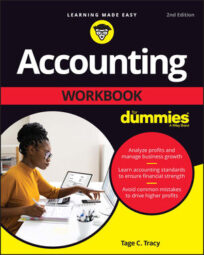The accounting equation used in business must always be kept in balance — the assets on one side of the equation must equal the claims against the assets on the other side:
Assets = Liabilities + Owners’ equity
These claims arise from credit extended to the business (liabilities) and capital invested by owners in the business (owners’ equity). The claims of liabilities are significantly different than the claims of owners; liabilities have seniority and priority for payment over the claims of owners.
Suppose a business has $10 million total assets. The money for the assets came from somewhere. The business’s creditors (to whom it owes its liabilities) may have supplied, say, $4 million of its total assets. Therefore, the owners’ equity sources provided the other $6 million.
Business accounting is based on the two-sided nature of the accounting equation. Both assets and sources of assets are accounted for, which leads, quite naturally, to double entry accounting. Double entry, in essence, means two-sided. It’s based on the general economic exchange model.
In economic transactions, something is given and something is received in exchange. A common example involves a business that borrows money from its bank. The business gives the bank a legal instrument called a note, promising to return the money at a future date and to pay interest over the time the money is borrowed. In exchange for the note, the business receives the money.
Following are some examples of accounting equations, followed by possible explanations of problems that might exist:
$250,000 Assets = $100,000 Liabilities + $100,000 Owners’ equity
Whoops! This accounting equation doesn’t balance, so clearly something’s wrong. Either liabilities, owner’s equity, or some combination of both is $50,000 too low, or the two items on the right-hand side could be correct, in which case total assets are overstated $50,000. With an unbalanced equation such as this, the accountant definitely should find the error or errors and make appropriate correcting entries.
$2,345,000 Assets = $46,900 Liabilities + $2,298,100 Owners’ equity
This accounting equation balances, but, wow! Look at the very small size of liabilities relative to assets. This kind of contrast isn’t typical. The liabilities of a typical business usually account for a much larger percentage of its total assets.
$26,450 Assets = $675,000 Liabilities – $648,550 Owners’ equity
This accounting equation balances, but the business has a large negative owners’ equity. Such a large negative amount of owners’ equity means the business has suffered major losses that have wiped out almost all its assets. You wouldn’t want to be one of this business’s creditors (or one of its owners either).
$4,650,000 Assets = $4,250,000 Liabilities + $400,000 Owners’ equity
This accounting equation balances and is correct, but you should notice that the business is highly leveraged, which means the ratio of debt to equity (liabilities divided by owners’ equity) is very high, more than 10 to 1. This ratio is quite unusual.

